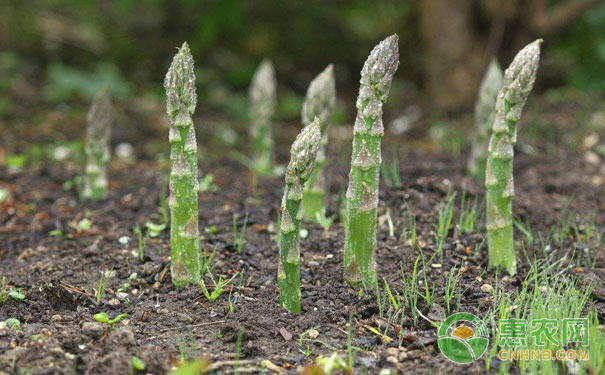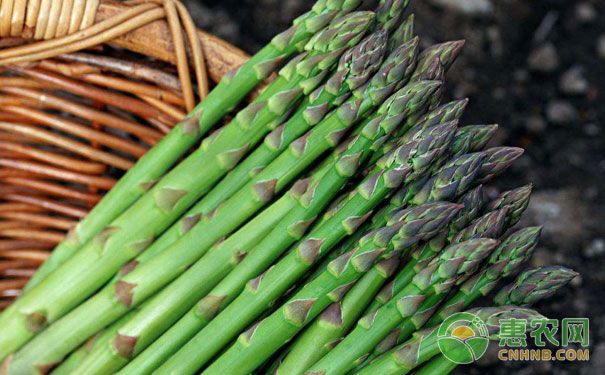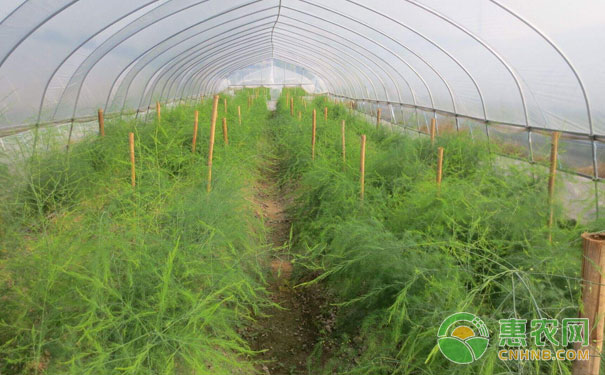Autumn management of asparagus directly affects the yield of asparagus in the spring of next year. During the period from summer to autumn, the temperature during the day is relatively high, the temperature is low at night, and the photosynthetic efficiency of asparagus is high. It is the key period for the growth of asparagus autumn stems. It is also a large storage period for asparagus roots and buds. Water is the key to high yield of asparagus in the spring of next year. Today, Huinong.com will introduce the autumn management technology of asparagus. First, the management of bamboo shoots planted in the same year: In the first ten days of September, 2000-4000 kg of fully decomposed organic fertilizer was applied per mu. 30-50 kg of nitrogen, phosphorus and potassium three-element compound fertilizer, or 40 kg of special fertilizer for asparagus. When weeding, we should fill in the planting ditch and water it in time to promote the growth of autumn stems. Two-year or two-year-old bamboo shoot management: After the green asparagus stops harvesting, timely removal of disease, yellow, dry, and old stems has great benefits for the growth of autumn stems. The growers generally let their natural growth after the harvest of white asparagus in late June, which has a great impact on the yield of asparagus in the coming year. White asparagus should be well managed in the autumn field, and the work of clearing sick, old, dry and yellow stems is the same as the autumn management of green asparagus. Whether it is white asparagus or green asparagus, it is necessary to leave about 6-9 mother stems with a diameter of 1-1.2 cm in the fall, and to top and control the height, and the height is between 1.3 and 1.5 meters. Pay attention to piling and pulling the rope to prevent the mother stem from falling down. Two-year-old bamboo shoots, generally 30-5000 kg of fertilized organic fertilizer per mu, 30 kg of nitrogen, phosphorus and potassium ternary compound fertilizer or 50 kg of asparagus special fertilizer. Third, the late field management of asparagus: During the fertilization process, attention should be paid to the ratio of nitrogen, phosphorus and potassium and the timely cultivation of the fertilizer after the fertilizer is applied. At the end of August, the peak period of asparagus pests and diseases occurs in early September. When leaving the mother stem in autumn, spray 70% mancozeb 800-1000 times per acre, add 20% chlorpyrifos, 1.8% avermectin 2000-3000 times, spray once every 10 days. Even spraying twice can prevent diseases such as brown spot and stem blight of asparagus, as well as pests such as cabbage caterpillars and negative mud insects. Asparagus autumn management technology is introduced here, asparagus grows in time in early September, when growing to more than 3 stems, when the growth period is more than 60 days, it is planted before freezing or next spring. As long as the management is right, you can reasonably harvest the summer bamboo shoots next year. Hematology analyzer is also called clinical blood cell analyzer, blood cell analyzer, blood cell analyzer, blood cell counter. The blood analyzer not only improves the accuracy of the experimental results, but also provides many experimental indicators, which play an important role in the diagnosis and differential diagnosis of diseases. Hematology analyzer is one of the most widely used instruments in hospital clinical testing. Automation in Hematology,Automated Hematology Analyzer,Hematology Analyzer Instrument,Hematology Analyzer Product Jilin Sinoscience Technology Co. LTD , https://www.contoryinstruments.com


Test items
Blood cell test refers to routine blood test, which is manual operation and counting under the microscope at first. It includes red blood cell, hemoglobin, white blood cell count and its classification, platelet count, etc. There are more than 20 items.
clinical significance
1. The blood analyzer is mainly used to detect various blood cell counts, white blood cell classification and hemoglobin content.
2. Hematocrit: obtained by multiplying the average volume of red blood cells by the red blood cell count.
3. Red blood cell distribution width: represents the degree of consistency of red blood cell size. When the red blood cell size is uneven, the red blood cell distribution width value increases, such as various types of nutritional deficiency anemia.
4. The three average indices of red blood cells are used to identify the type of anemia.
(1) The average hemoglobin content of red blood cells: increased in megaloblastic anemia, decreased in iron deficiency anemia, chronic blood loss anemia, uremia, chronic inflammation.
(2) Mean volume of red blood cells: increase in hemolytic anemia and megaloblastic anemia; decrease in severe iron deficiency anemia and hereditary spherocytosis.
(3) The average red blood cell hemoglobin concentration: decrease in chronic blood loss anemia, iron deficiency anemia; various diseases can be in the normal range. In megaloblastic anemia, the mean red blood cell volume increases, the mean red blood cell hemoglobin amount increases, the mean red blood cell hemoglobin concentration is normal, and the red blood cell distribution width increases.
5. Average platelet volume: the average volume of each platelet, the size of platelets is related to its function.
(1) Increased: seen in patients with idiopathic thrombocytopenic purpura, edema and proteinuria in late pregnancy.
(2) Decreased: seen in non-immune platelet destruction, aplastic anemia, thrombocytopenia repeated infection syndrome, chronic myeloid leukemia, etc.